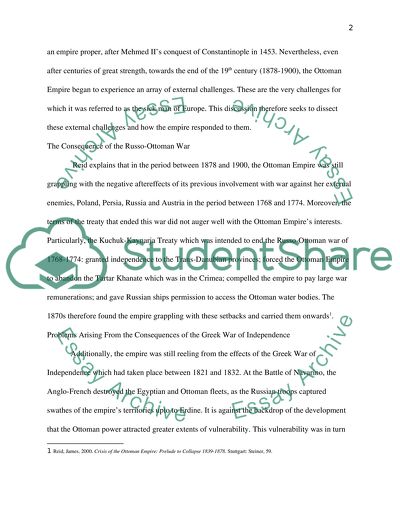Cite this document
(“What were the major external threats to the Ottoman Empire, 1878-1900, Essay”, n.d.)
Retrieved from https://studentshare.org/history/1617700-what-were-the-major-external-threats-to-the-ottoman-empire-1878-1900-and-how-were-they-contained
Retrieved from https://studentshare.org/history/1617700-what-were-the-major-external-threats-to-the-ottoman-empire-1878-1900-and-how-were-they-contained
(What Were the Major External Threats to the Ottoman Empire, 1878-1900, Essay)
https://studentshare.org/history/1617700-what-were-the-major-external-threats-to-the-ottoman-empire-1878-1900-and-how-were-they-contained.
https://studentshare.org/history/1617700-what-were-the-major-external-threats-to-the-ottoman-empire-1878-1900-and-how-were-they-contained.
“What Were the Major External Threats to the Ottoman Empire, 1878-1900, Essay”, n.d. https://studentshare.org/history/1617700-what-were-the-major-external-threats-to-the-ottoman-empire-1878-1900-and-how-were-they-contained.


